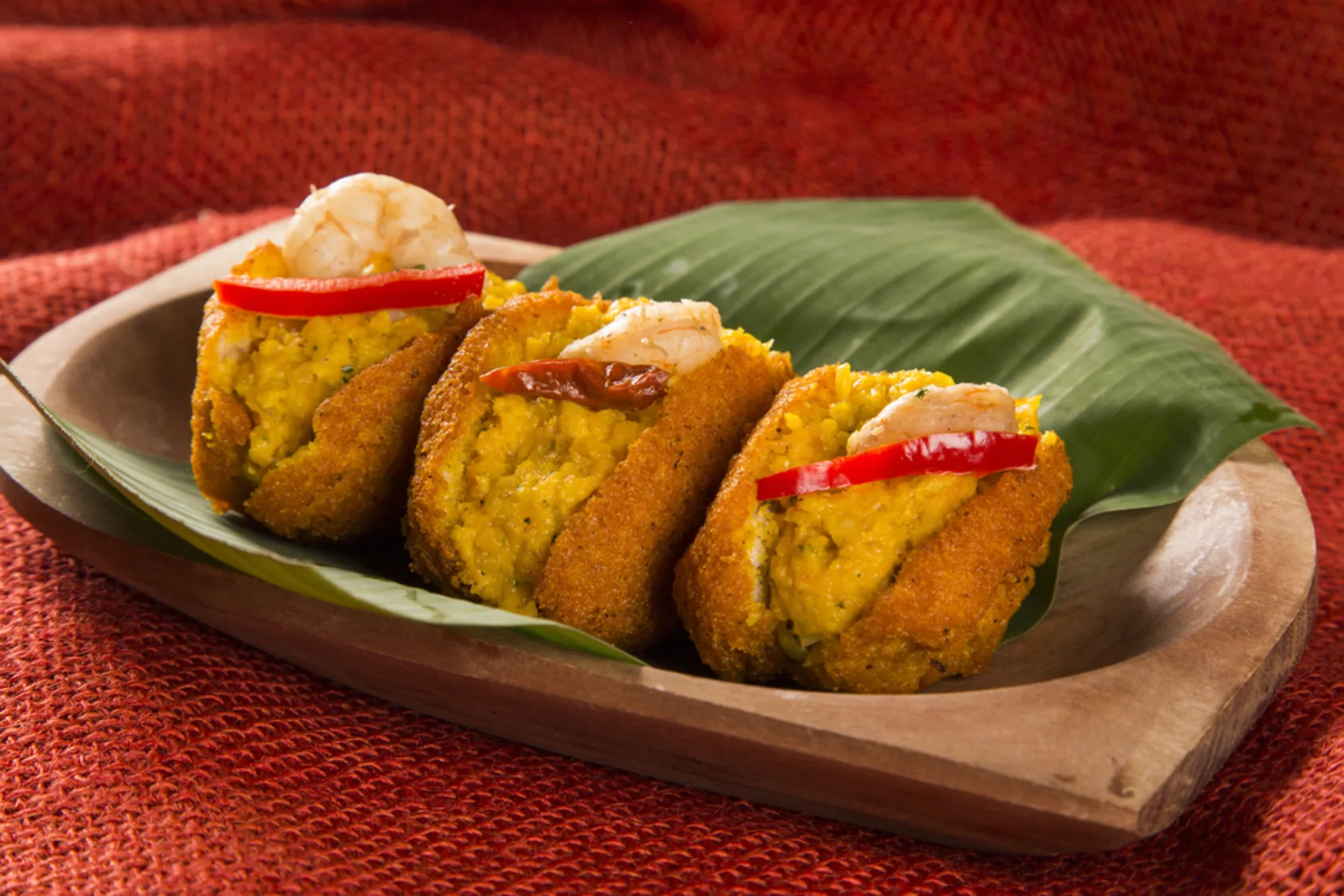
Acarajé
Deep-fried black-eyed pea fritters filled with shrimp and vatapá.
Ingredients
- •Black-eyed peas
- •Shrimp
- •Palm oil
- •Onions
- •Peppers
Instructions
Prepare batter
Soak and process peas into paste
Fry and fill
Shape and fry in palm oil, then fill
Acarajé is a traditional Brazilian dish that consists of deep-fried black-eyed pea fritters filled with shrimp and vatapá, a rich and flavorful paste made from bread, shrimp, coconut milk, peanuts, and palm oil. This dish is a staple in the northeastern state of Bahia and is deeply rooted in Afro-Brazilian culture.
The history of Acarajé dates back to the African slaves who were brought to Brazil during the colonial period. They brought with them their culinary traditions, and Acarajé is a prime example of this cultural fusion. It is often associated with the Candomblé religion, where it is offered to the gods during religious ceremonies.
To make Acarajé, start by soaking black-eyed peas and removing their skins. Process the peas into a smooth paste with onions and peppers. Shape the paste into small balls and deep fry them in hot palm oil until they are golden and crispy. Once fried, the fritters are split open and filled with a mixture of shrimp and vatapá.
While the traditional filling for Acarajé is shrimp and vatapá, you can customize it by adding other ingredients such as dried shrimp, tomatoes, or even a bit of hot sauce for an extra kick. Some variations also include a touch of coconut milk in the batter for added richness.
In Brazil, Acarajé is typically served as a street food, often accompanied by a side of hot sauce and a cold beverage. It is a popular snack during festivals and celebrations, and is enjoyed by both locals and tourists alike.
Acarajé is a delicious and indulgent treat, but it is also quite rich and calorie-dense due to the deep-frying process and the use of palm oil. It's best enjoyed in moderation, and pairing it with a fresh salad or some steamed vegetables can help balance the meal.
